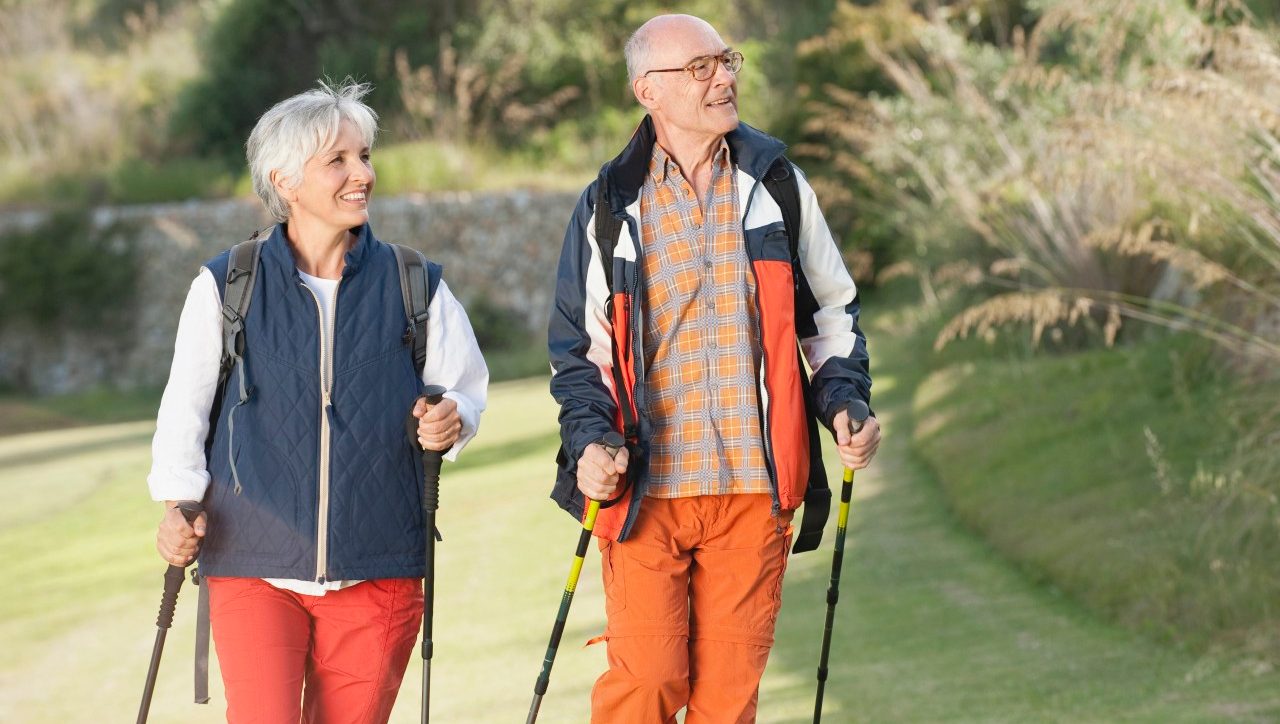Exercise Can Reduce Falls and Fractures

A little goes a long way for seniors whose muscles and bones need the extra support.
Study after study recommends exercise for pretty much everything that ails you. Moving your body controls weight, can prevent or help control a wide range of diseases, manages stress, improves mood, supports brain function, boosts energy, and improves sleep.
For older adults, exercise provides another important, often critical, benefit: it prevents falls and fractures than can cascade into failing overall health.
A population based study suggests that higher levels of even leisure time activity prevent hip fractures, and certain exercise programs may reduce the risk of falls. Evidence from studies suggests a 20 percent to 40 percent reduced risk of hip fracture if you are active compared to people who basically sit around.
A review of studies on the benefits of exercise among the elderly said “regular exercise is probably the only method that may prevent (reduced bone density) fractures, the true end point of the entire osteoporosis problem, by preventing both osteoporosis and falls.”
In older adults activities such as brisk walking, climbing stairs, dancing and “adult age” gymnastics and calisthenics will maintain or improve your bone density that prevents fractures.
Exercise can also improve your gait, balance, coordination, proprioception (the sense of the body in space) reaction time, and muscle strength, even in very old and frail people.
Another population based review of studies that involved nearly 80,000 seniors supported group and home-based exercise programs. Balance and strength training exercises, and Tai Chi, reduced falls. Overall, exercise programs aimed at reducing falls appeared to reduce fractures.
It’s important to understand that you don’t need a fancy health club, a trainer, or special equipment to accomplish conditioning that can prevent falls and fractures.
A long-term Finnish study of older women with mild bone loss found that those who followed a prescribed at-home exercise program had better posture (less postural sway), and better leg strength compared to a control group after a follow up of seven years.
They also improved their walking speed and distance, tests of functional ability were higher, and their moods perked up.
The program also was related to a reduction in the risk of fracture. In fact, there were no hip fractures among the group that exercised compared with five among the group that didn’t. The exercise group also had significantly lower death rates.
"This population based post-intervention follow-up study showed for the first time, to our knowledge, that supervised, mainly home-based weight-bearing exercise was successful in reducing important risk factors for falls and fractures in elderly women with (mild bone loss)," said co-author Riaja Korpelainen. "Despite a small sample size, the data also showed a promising effect of training on hip fractures."
If you have a history of falls, it's prudent to discuss it with your primary care doctor, who can often prescribe exercises that start at your personal level of ability. They can be built up as you get stronger.
That could involve simple squats to strengthen leg muscles or standing on one leg to improve balance. Adding weights when appropriate can improve bone density and muscle retention. These are all things you can do in your home.
“Many people wrongly think that falls are just a part of aging and something to be expected as you get older, but this is not true at all and exercise will make you less likely to fall,” said the University of Manchester’s Emma Stanmore, MD.
The best tips to increase your exercise levels if you are age 60 or older include minimizing the amount of time you are sedentary, or, in simple terms, just sitting around. You should be conscious of being active every day, and aim to do 150 minutes of moderate intensity activity at intervals of 10 minutes or more each week, or 10 minutes a couple of times every day.
Find out about exercise classes close to you. Many communities sponsor exercise classes for seniors through community centers. Doing exercise with a peer group can improve your motivation and your mood, helping you maintain a regular schedule.
Often, public health officials have information on sessions that aim specifically to improve strength and balance, the two keys to prevent falls and fractures.
If you’re online, use the Internet to look for opportunities in your area. YMCAs are good places to start because they offer a wide range of activities, from dancing to weight training, have staff that can give individual instruction, and are experienced in dealing with the seniors in their communities.
If nothing else, get up, get out, and start moving. Any activity will help, whether it’s organized or not. If you have a dog, walk it. If you have trash, take it to the garbage can.
You could actually be saving your life, and your quality of life, in the long run.
Updated:
April 07, 2020
Reviewed By:
Janet O’Dell, RN